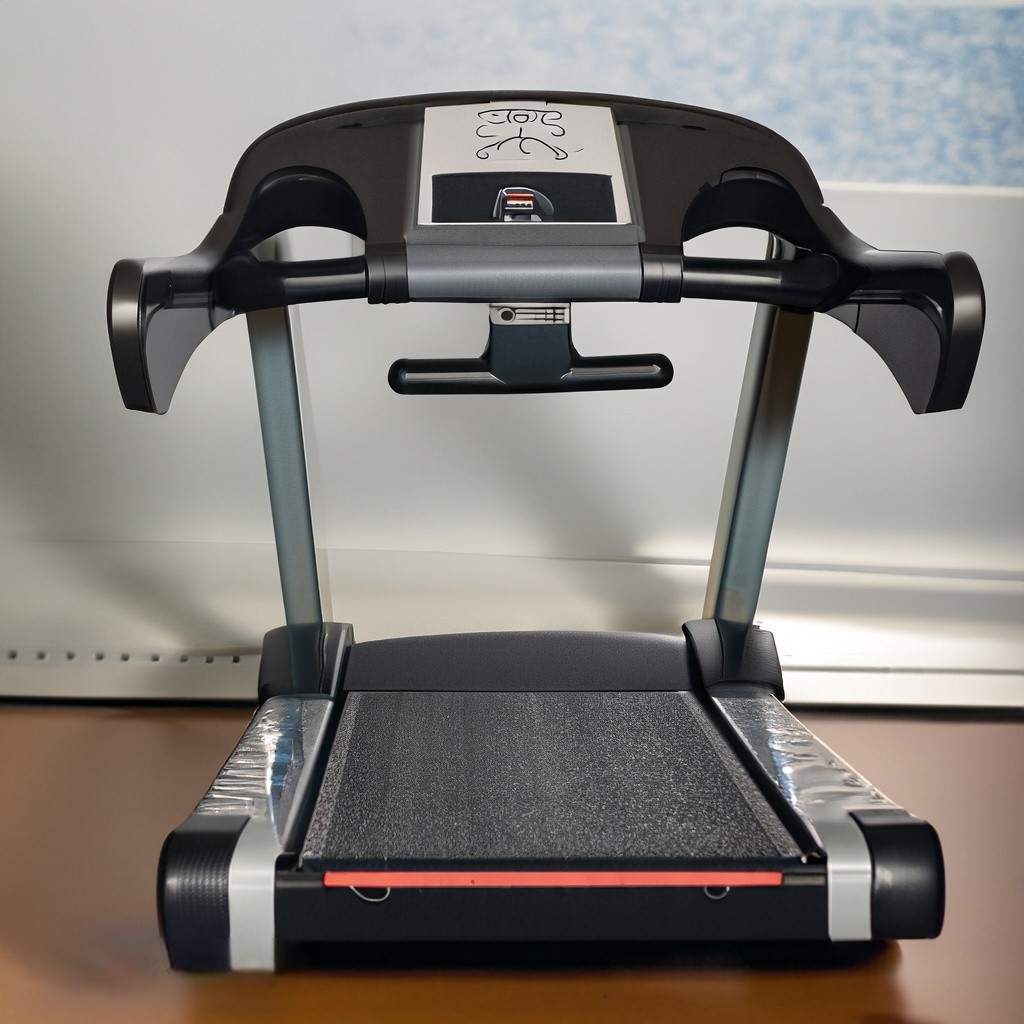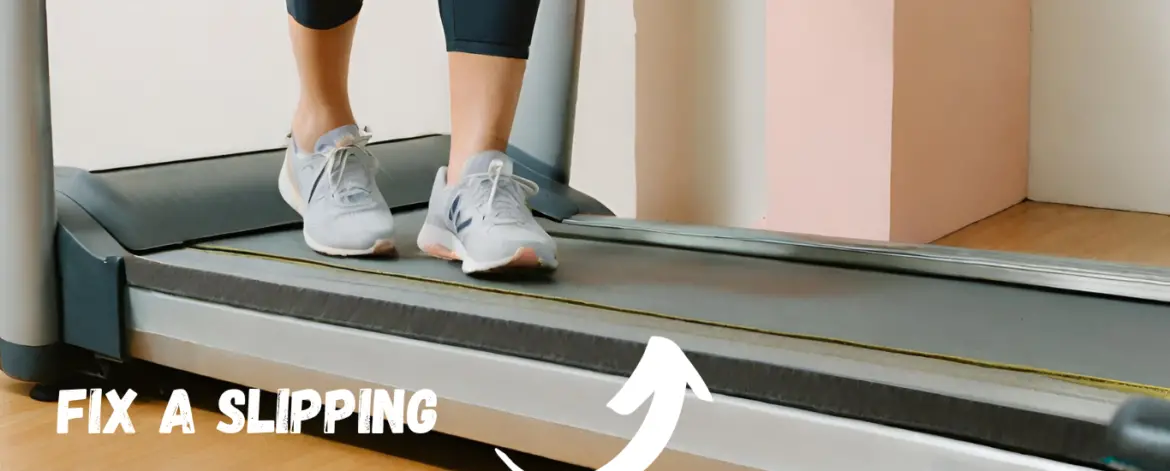Do you find yourself slipping off the treadmill during your workout? There’s nothing more frustrating than hitting a stride only to be pulled back by a constantly slipping belt! If this sounds like your experience, don’t worry – it may just require some simple maintenance on your part to get the belt running smoothly again. In this blog post, we’ll provide step-by-step instructions and tips for how to best fix a slipping treadmill belt so that you can quickly get back up and running (literally!).
Understand the Basics of How a Treadmill Belt Works

Before we dive into the repair process, it’s critical to understand the basics of how a treadmill belt operates. The belt is the part of the treadmill where you place your feet. It’s a thick and durable band that smoothly glides over a deck, driven by a motor. Over time, due to a variety of factors like regular wear and tear or improper alignment, the treadmill belt may start slipping, leading to an unstable and unsafe running surface.
The most common reasons for a treadmill belt to slip include overuse, inadequate maintenance, improper belt tension, or insufficient lubrication. However, the good news is, most of these issues can be rectified without professional help. By tuning up your treadmill regularly and adjusting the belt as necessary, you can ensure a smooth and slip-free workout. Let’s now discuss the steps to fix a slipping treadmill belt.
Tighten the Belt with an Allen Wrench
The first step in fix a slipping treadmill belt is to tighten it up. You can do this by using an Allen wrench, which is usually provided with your treadmill during its purchase. Turn off the machine and unplug it from the power source for your safety. Locate the two bolts at the back of the machine that hold the tension bar in place. Use your Allen wrench to tighten both bolts a quarter-turn clockwise. This will increase the tension on the belt and help it stay in place during your workout. However, be careful not to tighten the belt too much, as it can cause excessive friction and lead to more slipping.
Adjust the Tension in the Motor Control Unit

After you’ve adjusted the belt tension, you may need to tweak the tension in the motor control unit. This component controls the speed and force of the treadmill, and an imbalance in its settings can cause the belt to slip. To do this, locate the motor (usually found beneath the front part of the treadmill) and look for the tension knobs. Adjust the knobs until the belt runs smoothly at various speeds. Remember, small adjustments can make a significant difference, so turn these knobs gradually and test the treadmill frequently to avoid over-tightening.
Lubricate the Belt Regularly
A well-lubricated treadmill belt can significantly reduce the chances of slipping. Lack of lubrication can cause the belt to overheat and lose its grip, leading to slippage. Most treadmill manufacturers recommend specific types of lubricants for their products. Refer to your owner’s manual for instructions on how and when to lubricate your treadmill belt. As a general rule, you should lubricate every three months or after every 40 hours of use, whichever comes first. Also, make sure to clean the debris and dust from the belt before lubricating it.
Check and Maintain Proper Belt Alignment
Finally, misalignment of your treadmill belt can also lead to slippage. The belt should be centered and run straight down the length of the machine. If it veers to one side, it will disrupt your workout and potentially cause the belt to slip. You can adjust the alignment by loosening the tension bolts at the back of the treadmill and manually shifting the belt until it is centered. Once you’re satisfied with the belt’s alignment, tighten the bolts again to secure the position.
By performing these simple maintenance steps regularly, you can minimize the chances of your treadmill belt slipping and ensure a safe and effective workout. Always remember to unplug your treadmill when performing maintenance and follow your manufacturer’s guidelines for specific maintenance procedures and schedules.
Make Sure the Motor Pully is Aligned Properly
In some cases, the issue of a slipping treadmill belt may be caused by the motor pulley not being aligned correctly. This can happen if the pulley has been moved accidentally or due to regular wear and tear. To check for this issue, turn off your treadmill and remove the motor hood cover. Look at the pulley to ensure that it is centered on its two bolts and lined up with the front roller pulley. If it is not aligned, use a wrench to loosen the bolts and adjust the pulley until it is in the correct position.
Regular maintenance of your treadmill can go a long way in preventing issues like slipping belts. By following these simple steps, you can fix a slipping treadmill belt on your own and avoid any disruptions to your workout routine. Remember, always prioritize safety and consult a professional if you’re unsure about any of the steps mentioned above. Get back to enjoying a smooth and safe treadmill workout with these tips! Treadmill Slipping: Causes and Troubleshooting
A slipping treadmill belt can be frustrating and even dangerous, but it’s not an uncommon issue. Here are the most common causes of treadmill slipping and how to troubleshoot them:
- Overuse: Running on a treadmill wears down the belt’s grip over time, leading to slippage. To avoid this, be sure to regularly check and maintain your treadmill.
- Improper maintenance: Lack of lubrication or cleaning can cause the belt to lose its grip and slip. Make sure to follow your manufacturer’s guidelines for regular maintenance.
- Incorrect belt tension: An improperly tightened or loose belt can cause the belt to slip while in use. Refer to your owner’s manual for instructions on how to adjust the tension.
- Misalignment: A misaligned treadmill belt can also be a common culprit of slippage. Refer to the steps mentioned above on how to properly align the belt.
In conclusion, with a little bit of maintenance and adjustments, you can easily fix a slipping treadmill belt and get back to enjoying your workout without any interruptions. Remember to always prioritize safety and consult a professional if needed. Happy running!
Apply Lubricant to the Running Deck
Applying a suitable lubricant to the running deck of your treadmill is another crucial step in preventing belt slippage. The constant friction between the belt and the running deck can lead to wear and tear, which in turn may cause the belt to slip. To lubricate the running deck, first switch off and unplug the treadmill. Lift the belt off the deck slightly and apply the lubricant in a zigzag pattern along the length of the deck. Rotate the belt manually to ensure even distribution of the lubricant. Following this procedure periodically can substantially reduce the risk of belt slippage and prolong the lifespan of your treadmill.
Recalibrate The Speed Sensor on Your Treadmill
The speed sensor is a small component that tracks the movement of the belt and communicates it to the console. If this sensor gets dirty or damaged, it can cause the treadmill to display incorrect speeds, leading to issues like slipping belts. To recalibrate the speed sensor, turn off and unplug your treadmill and locate the sensor (usually attached near one of the pulleys). Clean the sensor with a damp cloth and then rotate the belt manually to check if it is tracking properly. If not, refer to your owner’s manual for instructions on how to recalibrate or replace the sensor. This simple step can help prevent slipping belts and ensure accurate readings during your workouts.
Remember, prevention is always better than cure when it comes to issues like treadmill belt slippage. By regularly maintaining and cleaning your treadmill, you can avoid these problems altogether and enjoy a smooth, safe workout every time. So don’t let slipping belts hold you back from achieving your fitness goals.
Conclusion:
In the End, we hope this guide has given you a better understanding of the common causes of treadmill belt slippage and how to troubleshoot them. By following these simple steps, you can easily fix a slipping treadmill belt and continue with your regular workout routine without any interruptions. Remember to prioritize safety and consult a professional if needed.





